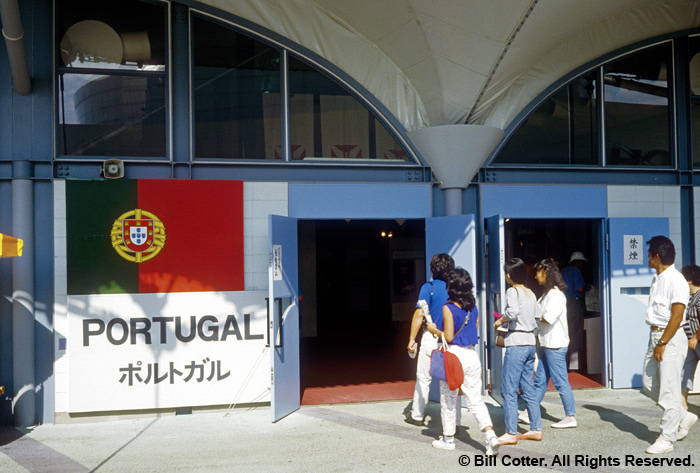Portugal
“Portugal – Japan: Past and Future”
Portugal lies at the western end of Europe, and is well known as the first country to introduce European culture and products, including European firearms, to Japan. In 1543, Portuguese navigators arrived in Tanegashima in the south of Japan and the next hundred years witnessed considerable religious, cultural, and commercial activity between the two countries until Japan shut its doors in the 17th century. In the mid-1800s, however, friendly relations between Portugal and Japan resumed. Even today many Portuguese words remain in the Japanese language, evidence of Portugal's strong influence. Wenceslau de Moraes, a writer who lived and died in Japan, played a prominent role in increasing understanding between the two countries.
RETRACE HISTORICAL VOYAGES Portugal has long been known for navigation and shipbuilding, and its flag hangs at the entrance; ship's sails divide the displays, which create the atmosphere of being aboard a ship. There are photographs of the modern shipyards, and a large map allows children to retrace the routes of famous navigators.
Also on display is a model of St. Paul's Cathedral, Macao. This cathedral, the symbol of Macao, was built by Japanese Christians and Portuguese missionaries expelled from Japan by the Bakufu government's closure of the country. Japanese influence is visible in many of the carvings. In another corner, you can see a display of old guns and of folk costumes still worn by present-day Portuguese fisherman. You can also sample and buy famous brands of Portuguese wine. In addition, two exhibitions (each lasting three months) will introduce Portuguese ceramic and glass industries.

The pavilion focused heavily on the long ties between Portugal and Japan, suggesting that the two countries could benefit by increasing joint commercial ventures. (CD #5 Set 9 #22)
